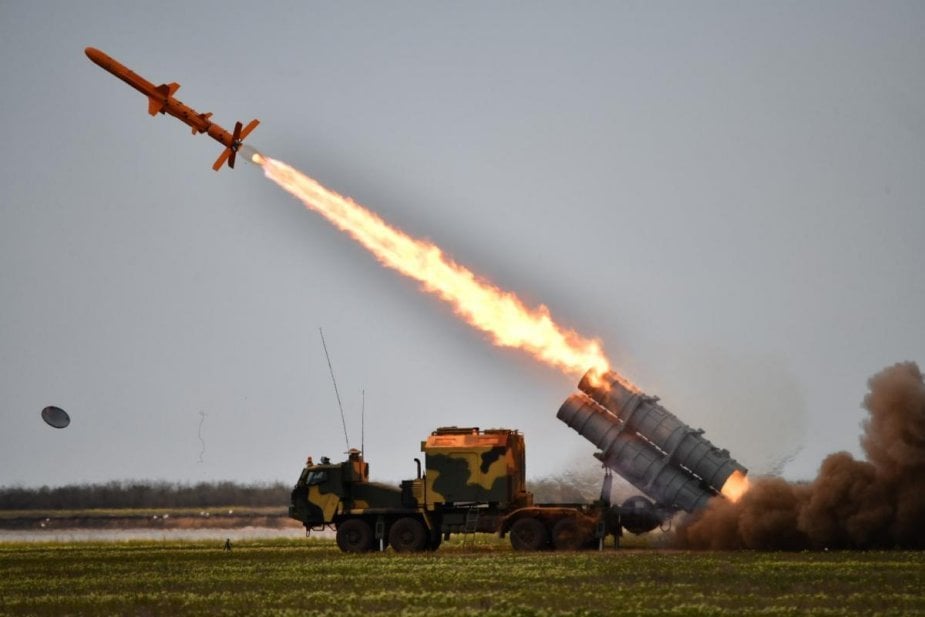
This post is part of a series looking back at the top naval stories from 2022.
It has been 10 months since Russia invaded Ukraine and the war is on track to extend into the new year.
Peace talks between the two countries are unlikely to happen in the near future due to unwavering demands on both sides, The New York Times reported Wednesday. Russia wants four regions of Ukraine it says it annexed in September, while Kyiv wants Russian leaders to face a war tribunal for the invasion.
Russia continued its bombardment of the country, with more missile strikes hitting Kherson, a southern city along the Dnieper River that has been a target of Russian bombardment for the majority of the conflict. Kherson has been contested, with the port city the first to fall under Russian control before the Ukrainians reclaimed it in November.
For the most part, the conflict between the two countries has been fought on land and in the air, with Russia bombarding Ukraine with missiles. The Black Sea has not been a major theater in the conflict, outside of issues with exports and an early victory for the Ukrainians.
The most recent U.S. aid package – the 28th since August 2021 – included one Patriot missile battery. The package also included additional ammunition from the existing U.S. ammunition stockpile.
Overall, the U.S. has promised $21.1 billion in aid for Ukraine.
The aid has largely focused on air defense, with the U.S. sending multiple munitions to protect against the Russian air bombardment.
The last time the U.S. sent maritime aid was in November when it sent 40 patrol boats, USNI previously reported. Washington also sent patrol boats in June. It was not clear in November what types of boats would go to Ukraine. Deputy Pentagon Press Secretary Sabrina Singh told reporters at the time that the Ukrainians would determine how the boats would be used.
At the time, Russia had just sunk a Ukrainian patrol boat, possibly operating in the Dnieper River, Naval News reported. The 18 patrol ships sent in June included ones manufactured by Metal Shark.
Maritime operations have not been a main focus of the Ukraine-Russia conflict. Concerns about an amphibious attack on the port city of Odesa did not come to fruition. While the Russians did complete one amphibious assault on coastal cities outside of Mykolaiv, they were unable to capture the city through the amphibious assault efforts. Instead, the Russian troops have largely reached Ukrainian cities by land.
Moskva Sinking

The Russian Navy has played a very limited role in the Ukraine conflict. While there have been about a half dozen ships in the Black Sea that have fired missiles into Ukrainian cities, most have been kept away from the coast due to the threat of anti-ship missiles.
The U.S. has promised a land-based Harpoon launcher to the Ukrainians through Ukraine Security Assistance Initiative, but the timeline is unclear. Other allies, like the Danish, have provided Harpoon missiles to the Ukrainians.
The threat of anti-ship missiles has kept Russian warships away from the Ukrainian coast, especially after the Ukrainian Navy used Neptune missiles to hit and sink RTS Moskva (121).
Moskva was likely blind to the Neptune missiles, USNI News previously reported, as it did not appear to have the fire control radars for its cruise missile defense system activated.
The sinking of Moskva was a morale victory for the Ukrainians, as the ship had attacked Snake Island in the early days of the conflict. With the ship gone, the Ukrainians were able to retake the island, although Russia claimed it left voluntarily.
In July, the Ukrainians sank a Russian supply ship headed toward Snake Island, USNI News previously reported.
Since the sinking of Moskva, the Russians have largely kept their Black Sea Fleet away from Ukraine. In September, it appeared that the Russian Navy largely moved its Kilo-class submarines from Sevastapol, Crimea to Novorossiysk port in Krasnodar Krai.
In October, the Ukrainians successfully struck Sevastapol with drones, forcing the Russians to move the Black Sea Fleet further into its ports. Admiral Makarov, the new flagship for the Black Sea Fleet after the Moskva sank, was likely damaged in the drone attack.
Grain

One of the consequences of the Russia-Ukraine conflict is Ukraine’s inability to export its grain. The country is responsible for 10 percent of the world’s grain exports and it often supplies lower-income countries in the Middle East and North Africa.
Without Ukraine exporting its grain, fears arose of food shortages in countries across Africa and Asia. Russia, another large grain exporting country, also struggled to export the commodity because few countries and insurance companies wanted to risk relationships with Moscow.
Russia and Ukraine agreed to an export deal in July that was brokered by Turkey and the United Nations. The deal allowed Ukraine to export grain from three ports.
The deal came to a temporary halt after the October attack on Sevastapol, but it resumed a day later. The deal is currently operating under a four-month extension.
Since the deal, 15,917,590 metric tonnes of foodstuffs have been shipped. Of the 15,917,590 metric tons, 29 percent is wheat, while corn accounts for 45 percent.





